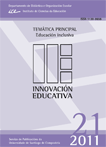Integration of ICT in the field of Engineering. Design and implementation of interactive activities
Main Article Content
Abstract
The adaptation to the European Higher Education Area implies a change in the teaching methodologies since, within it, it is fundamental to supply students with learning autonomy. This work aims to improve the methodology of several engineering related subjects via the design and implementation of different activities based on virtual tools. Initially, a survey was conducted among students to assess their knowledge and interest in different digital tools. Then, depending on the teaching modality for which they would be aimed, the kind of activity to be developed was described. Finally, the satisfaction of the students with their achievements, their comments on the activities, and their suggestions for improvement were collected through a survey and then analyzed.
The design, elaboration, and implementation of those activities as well as the satisfaction, participation and academic results of the students who experienced them are described in this work. Initially, the students’ knowledge on the existence of different digital tools was scarce. After the experience, the students were generally satisfied. The students’ participation in the interactive activities was greater if they were compulsory and, therefore, computable in the final mark. In addition, the interest rate declined as the number of suggested activities increased.







